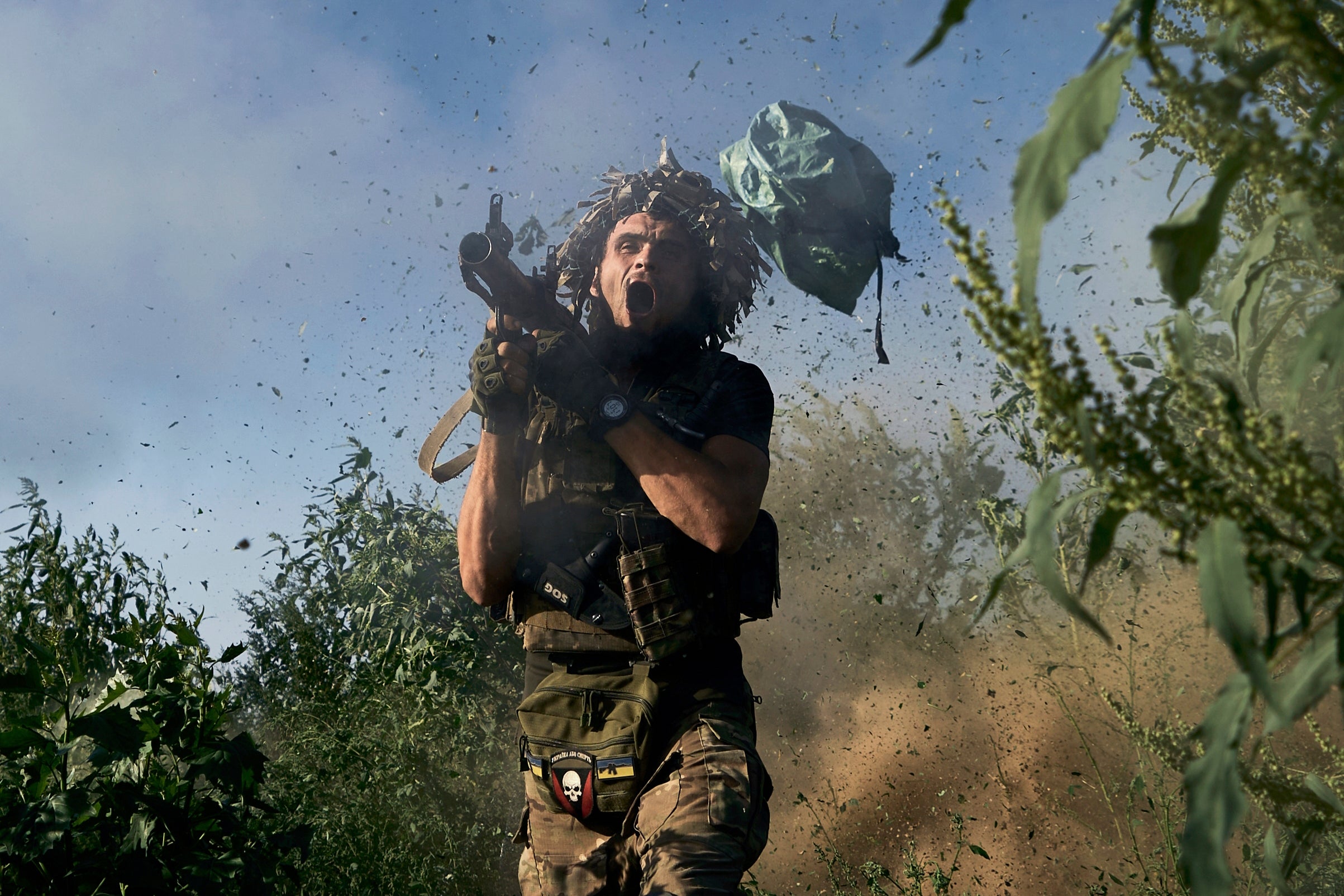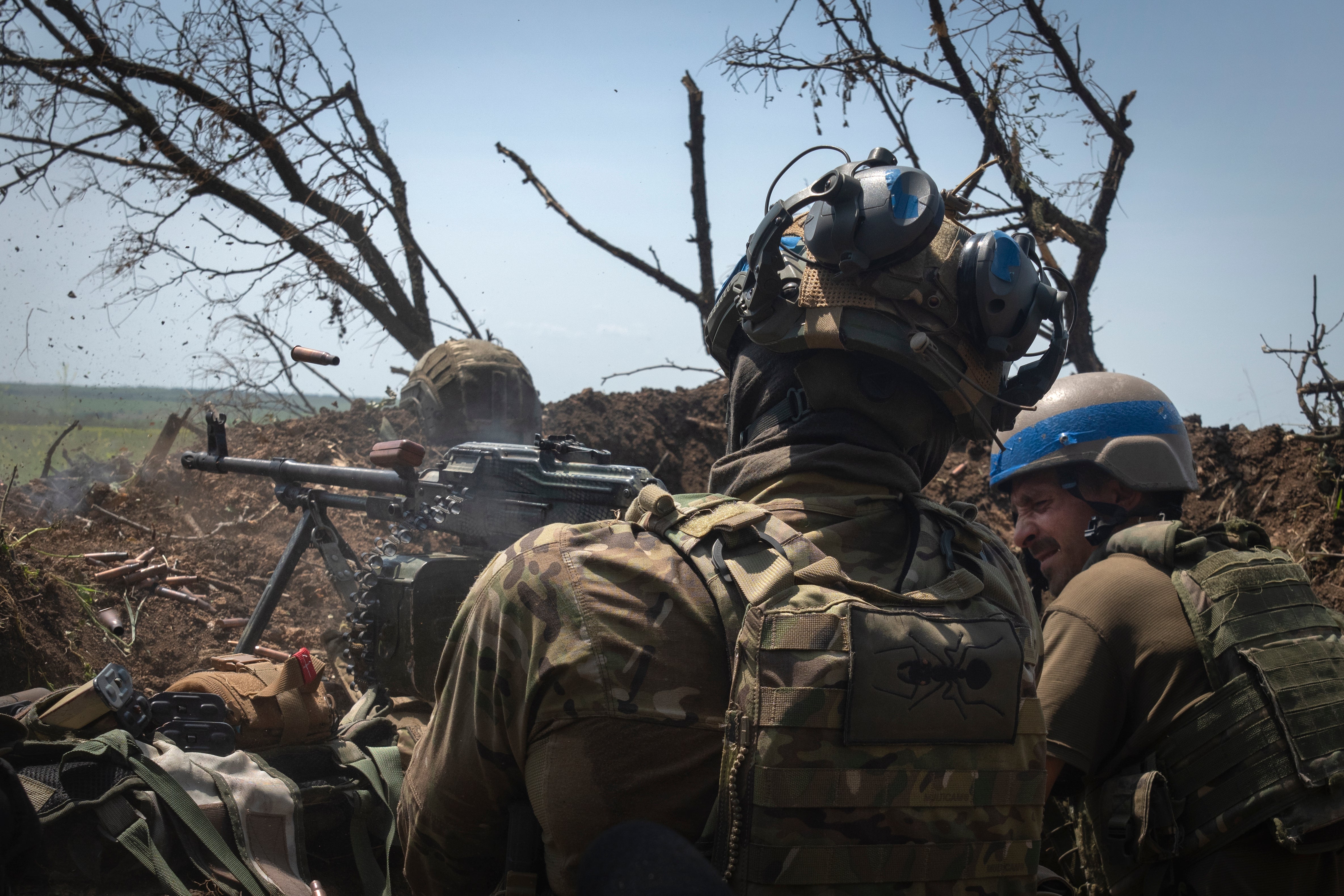How ‘industrial-scale’ Russian minefields are hampering Ukraine’s counteroffensive
Russia’s easily replenished ‘concrete wall’ has forced Kyiv to rethink its tactics – but hopes for a ‘hell for leather’ breakthrough remain, reports Andy Gregory


Western hopes for Ukraine’s counteroffensive to achieve a dramatic breakthrough have been significantly pared back, with US officials now reportedly forecasting that Kyiv will fall short of its key aim of severing Russia’s land bridge with occupied Crimea.
One of the significant challenges confounding Kyiv’s efforts to redraw the front line is the millions of mines Russia has laid in their path, to the extent that Ukraine is now being described as the most heavily mined country in the world.
“What we are seeing is an industrial level of mine-laying, particularly anti-tank mines,” said Paul McCann, of the Halo Trust, the world’s largest humanitarian landmine clearance organisation. “Nothing like it [has been] seen in Europe since the Second World War.”

In one part of the liberated Mykolaiv region, close to lands flooded by the Khakovka Dam attack, clearance workers found “incredibly dense” fields of powerful anti-tank mines, with one explosive for every square metre, Mr McCann said.
But Ukraine’s defence minister Oleksii Reznikov has warned that the minefields on Russian-held territory – spanning the length of the 1,000km front line – are up to five times as dense as those found in Mykolaiv.
They are also deep, with reports of as many as five anti-tank mines being stacked one on top of the other – capable of destroying even tanks equipped with mine ploughs.
The painstaking efforts by Ukrainian troops to clear paths through the fields of explosives – often under heavy shelling and other fire – mean that, at one key hospital in Dnipro, the number of wounded troops arriving with mine-related injuries is now said to be second only to victims of artillery blasts.
The minefields are “a serious problem”, warned Mark Galeotti, of the Mayak Intelligence consultancy.
“If you’re facing a heavily mined battlefield, you have to move slowly ... at the speed of anti-mining tanks or engineers moving through marking mines, so you are therefore vulnerable to being caught under artillery fire.
“Mines fix you slowly or they channel you – often into a ‘kill zone’ where they’re waiting to drop volleys of artillery shells on you. They deny the Ukrainians that kind of fluidity and speed of movement [seen during last year’s lightning counteroffensive].”
Meanwhile, as Ukrainians risk their lives to clear the minefields, “the Russians can replenish them if nothing else just by using rocket launchers that scatter mines”, Mr Galeotti added. Mines can even be laid in this fashion to trap Ukrainian troops who have just cleared a path through, often by hand.
The mines “would be vastly less formidable”, however, were they not “part of a very complex defensive setup”, said the author and honorary professor at University College London. He was alluding to the array of trenches, anti-tank ditches, “dragon’s teeth” barricades and other obstacles Russia has constructed.
Experts previously told The Independent that it was Western hesitance to supply Kyiv with the necessary weapons for its counteroffensive which allowed Russia time to create these formidable defences – meaning hopes of a “Hollywood”-style breakthrough are potentially “unrealistic”.
“It’s always a danger to underestimate Russians in the defence, they can be very dogged,” Mr Galeotti said.

Following initial attempts to punch through Russia’s defences which likely proved costly in both manpower and Western-supplied equipment, including tanks, Ukraine now appears to have broadened its focus to target supply lines, decimate key artillery systems and exhaust the Russian military with drone strikes on targets such as Moscow, Belgorod and the Black Sea fleet.
“The change in tactics at the line of contact on the battlefield has been towards using lighter footprints, small units on foot, but in the grander scheme of things we’re seeing a lot of these asymmetric cheap attacks being conducted,” said Dr Marina Miron, of King’s College University’s war studies department.
“They don’t want to waste the Nato-trained brigades to run against a concrete wall, which is basically those minefields and the Russian defences,” Dr Miron added.
Mr Galeotti estimates that Ukraine has already committed half of its new 10th Corps, comprising troops trained and equipped by Nato – a tens of thousands-strong grouping initially intended to hold back and capitalise on any breakthroughs rather than toil at creating them.
The minefields and resulting casualties have been “leading to a degree of fatigue even within the [rest of the] country”, Mr Galeotti believes – pointing to recent reports suggesting that the days of “lines of volunteers eager to sign up” to Ukraine’s war effort are “long gone”.
However, Ukraine has been buoyed this week by successes in breaking through the first line of Russian defences near the Zaporizhzia village of Robotyne – a first step towards severing Russia’s land bridge with Crimea.
This breakthrough is “tactically significant” in that it may allow Kyiv’s forces to start operating beyond Russia’s densest minefields, according to the Institute of the Study for War.
The gains have prompted some suggestions that further advances could finally allow Kyiv’s troops to pour through paper-thin gaps in the minefields to establish some control over a vast area between Russian lines.
“If the Ukrainians are going to break through, it’s going to be like bankruptcy – it’s gradually, then all at once,” said Dr Patrick Bury, a senior lecturer at Bath University and former Nato analyst.
“That’s what you’re looking for – you get through the defences and suddenly you’re out in the open,” said the former British Army infantry captain. “Basically, you tell tanks and armoured infantry to drive hell for leather and you’re trying to get to undefended towns and cities because they’re your logistics and transport hubs.
“They’ll be trying to drive [as] fast as they can towards the Sea of Azov. It’s not as if they want to cut the Russians off completely but they want to force them to withdraw ... Once you break out and you’re inside, it’s about momentum, decision-making, and you’re the one imposing your tempo on the enemy. You move and they have to react.”
But while the gains at Robotyne show “progress”, with Dr Bury also pointing to fighting near the village of Urozhaine as “the one to watch”, he believes the chances of a sudden breakthrough are “50/50 at the moment”.
“It’s hanging in the balance, and I think the next few weeks are going to be pretty decisive, one way or the other.”





Join our commenting forum
Join thought-provoking conversations, follow other Independent readers and see their replies
Comments